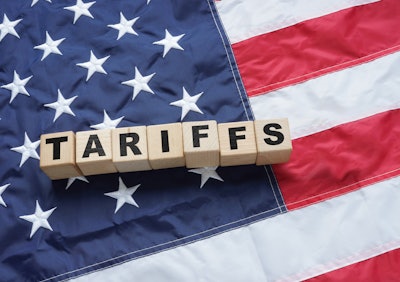
Navigating tariff policies as they unfold in real time is like trying to read a map in the fog. Not only are the policies constantly changing, hot takes and speculation abound, leaving shippers scrambling to understand their place in an uncertain, rapidly changing landscape and resigned to unexpected costs as simply the cost of doing business.
While the details of tariff policies are a moving target, the general effects are consistent, with import duties transforming the cost structures of U.S. businesses and retaliatory measures abroad posing hurdles for American exports. While building a clear understanding of fast-evolving trade policies is challenging, it is possible. By asking the right questions, knowing what to look for and considering recent history as a reference point, shippers can position themselves to confidently process and adapt to rapidly evolving tariffs.
Lessons from the pandemic
COVID-19 chaos forced supply chains to adapt in the face of disruption, as shortages of everything from toilet paper to transportation capacity skyrocketed prices and pushed businesses to stockpile just-in-case inventory reserves. But over the past couple years, businesses have worked hard to regain a sense of normalcy, shifting back to efficient just-in-time inventory management and taking advantage of softer demand to regain control of transportation costs.
As tariffs threaten to inflict similar cost increases and disruption, should shippers dust off their pandemic-era playbooks? Not quite. While recent reports of retailers pulling forward merchandise to get ahead of new tariffs is reminiscent of just-in-case stockpiling from 2022, the macroeconomic outlook is distinctly different. Consumer demand is a far cry from the highs of the pandemic era and interest rates remain elevated. Stagnant demand has also pushed down transportation prices for well over a year, and with cost pressures from tariffs, a surge in demand that pushes up rates is unlikely.
How this round of tariffs compares to 2018
The current administration has a history of using tariffs. But if shippers feel more off balance trying to react to tariffs this time around, they have good reason. The current tariffs are levied via executive order rather than through congressional action, which means they take effect far more quickly, leaving businesses minimal time to plan and adapt. A container ship may set sail only for a new executive order to take effect while in transit across the Pacific, leaving importers on the hook for thousands of dollars more than they planned upon arrival. Another source of uncertainty is the broad, non-specific nature of many executive orders, which is incongruous with existing trade agreements that have extensive conditions and instruction on the classification of goods.
Take the modification of the 25% tariff against Canada to exclude goods covered by the United States-Mexico-Canada Agreement (USMCA). Automobiles are part of the USMCA, but does the exemption just cover finished automobiles or does it cover parts as well? To illustrate this difference another way, consider a school with very specific uniforms and rules covering what students wear from head to toe, including consequences if anything does not precisely meet the dress code. If students are told to simply “wear green on St. Patrick’s Day,” questions may arise on how exactly students should interpret this guidance to avoid running afoul of existing rules.
Practical advice to weather the tariff storm
Too much news can be bad news, particularly when it takes you down a social media rabbit hole full of speculation, doom and gloom. The best way to stay informed and keep a clear head is to prioritize simplicity – stop following the LinkedIn “experts” and reference whitehouse.gov as the definitive source of tariff information.
The complex nature of global trade policy means the intricacies of your supply chain can be key sticking points for tariff eligibility. Seemingly simple questions can have complex answers, and finding the true origin of goods and suppliers – a critical exercise to understanding your exposure to these tariffs – can require digging beneath the surface through layers of suppliers and ownership. Something as simple as a supplier’s provenance may not be readily apparent, as conducting operations in a country not subject to tariffs is no guarantee the supplier is actually based there. Shippers dealing with tier two or tier three suppliers – suppliers who buy from other suppliers – must dig through even more layers. For example, a direct supplier might be in Brazil, but they might be buying from China.
For businesses purchasing goods from suppliers that are not the original seller, the concept of first sale is critical to understanding tariff eligibility and the basis of any applicable duty. In some cases, the first sale – the initial transaction between two companies in the same country, prior to a subsequent sale to another business elsewhere – will be the basis on which the tariff is levied, rather than the markup of the second transaction.
Finally, do not get tripped up on fundamentals. Customs classifications are complex and subject to change, and incorrect classifications can result in paying unnecessary tariffs. Rather than assuming classifications used in the past are correct, conduct an audit to verify or reclassify freight.
Help your broker help you
The tariff landscape remains a work in progress. In fact, a new chapter in the saga may have begun in the five minutes you took to read this article. A strong relationship with a customs broker is essential when navigating this fluid environment. The relationship is a two-way street, and shippers can do their part by providing as much data as they can – the more the broker knows, the more swiftly and effectively they can act on your behalf. A good broker can help address the tyranny of the urgent as shippers adapt to fast-breaking changes and help with projections that form the basis for longer-term planning.
For now, stay calm, stay informed and consider buying your customs broker a cup of coffee – or something stronger.



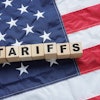


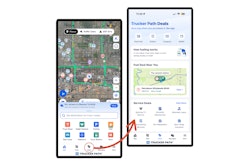

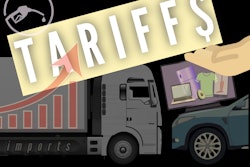


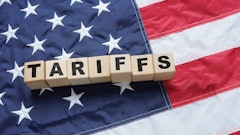


![Pros To Know 2026 [color]](https://img.sdcexec.com/mindful/acbm/workspaces/default/uploads/2025/08/prostoknow-2026-color.mduFvhpgMk.png?ar=16%3A9&auto=format%2Ccompress&bg=fff&fill-color=fff&fit=fill&h=135&q=70&w=240)



